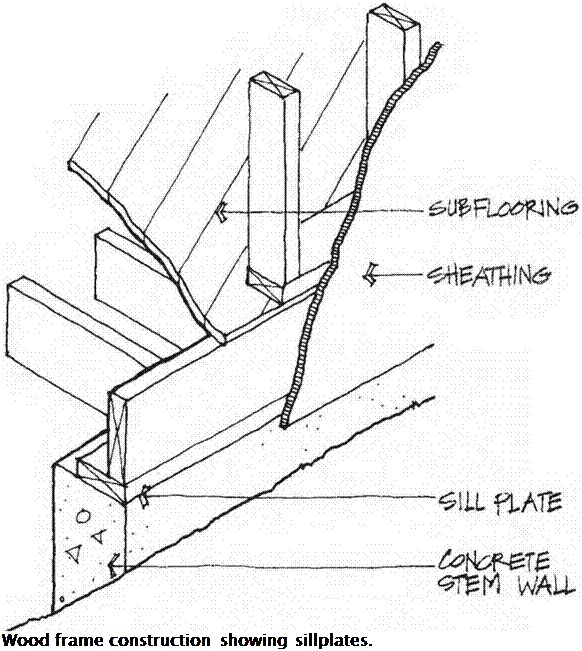Rough Carpentry
Sill plates or mudsills are decay – and insect – resistant wood members used in frame construction wherever wood comes into contact with concrete or soil. For many centuries before toxic petrochemicals came to be used, builders had devised natural means for avoiding rot and insect infestation. They commonly charred the portions of wood that were to be placed in the ground or else used naturally resistant woods. From about 1974 to 2003, the standard building practice was to use lumber pressure treated with chromated copper arsenate (CCA) or ammoniacal copper arsenate (АСА). CCA and АСА contain arsenic salts and chromium compounds that can leach out onsite and be absorbed through the skin or ingested by mouth. They are extremely toxic to

both humans and the environment. The use of these chemicals for sill plates is now banned but they still will be found in most existing frame homes. CCA imparts a green tinge to the wood. You have probably seen this toxic wood used in childrens playground equipment.
It is important that no recycled sill plates containing CCA or АСА find their way into new construction, and you may wish to add the following to your specifications:. [7]
* ACQ Preserve: Wood treatment containing alkaline copper quaternary (ACQ)
* Nature Wood: A waterborne wood preservative containing ACQ
* TimberSIL: A nontoxic, arsenic-free wood treatment process that uses sodium silicate technology (SST)
• The heartwood of untreated farmed cedar or redwood is acceptable for use as sill plates where approved by local code officials.
* Where the sill plate is at least 18 inches above grade, a metal termite shield may be used instead of a treated sill plate if acceptable to local code officials.
Wall Framing
Where wood 2x wall framing is used, follow the guidelines for wood selection and storage in this Division.






Leave a reply